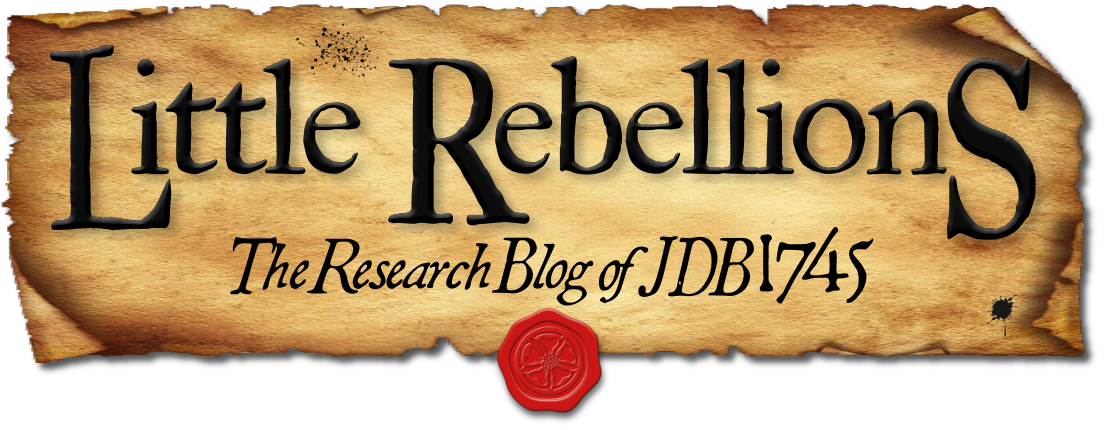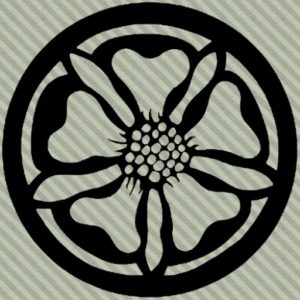Though it is easy to get lost in the romantic historical record of a conflict like the Jacobite risings, occasionally a document comes to light that viscerally describes the dreadful effects of civil war from a time long past. Jail returns like this one, which registers some of the sick and wounded who were confined in Stirling Castle during the spring of 1746, tell us a number of things about the cost of battle in eighteenth-century Britain – both literally and figuratively. This particular return from the National Library of Scotland lists the names and conditions of twenty-six men held at the castle and treated by the doctor there, and some of the language used to describe the wounds of these men truly brings the past alive in a horrific manner.1
Not all of these prisoners were Jacobite soldiers. Only six on the list are specifically noted as ‘rebels’, though three others are recorded as having been in league with Lord John Drummond’s troops in French service, who came to Scotland in the winter of 1745 to fight in the Jacobite army. A further three individuals are simply described as ‘Highland men’, but the implication is that they were also in prison for treasonable acts. At least two of the men appear to be deserters from British army regiments, and the other dozen are not identified by their crimes. Nonetheless, the grisly conditions recorded about many of these prisoners tell of their adversity.
Nicholas Rapho, one of the troopers in French service, was pained with a broken leg, but his prison mate John Noris had his leg ‘cutt off’ and died shortly thereafter. Four men suffered from wounds in the thigh (two of them gunshots), one had his arm pierced by a bullet, and William Howard, another soldier in Drummond’s, was ‘shot thro the shoulder’. It is not clear at which battle these wounds were inflicted, or even if the men were on a battlefield at the time, as the corresponding dates next to each name span from 3 February all the way to 20 July 1746.2 The majority of these prisoners were not violently injured, however; over half were only treated for fevers, jaundice, or rheumatism.
Thanks to William Christie, the chirurgeon (doctor) at Stirling Castle who helpfully listed his fees beside each prisoner’s name, we have a clear idea of how costly medical care was for the men confined there – or for state subsidy, should the surgeon’s fees not be paid by the patients. According to Christie’s records, treating ills like common fevers was in the modest range of two to six shillings, with more persistent conditions like jaundice costing up to eight shillings. In contrast, the price of proper surgery to treat violent wounds including gunshots, fractures, and severe lacerations remained static at £0.6.8 per prisoner. The full cost of care for these twenty-six captives totaled £6.14.10 sterling, which in 1750 would cover sixty-seven days of wages for a skilled tradesman, and equated to just under £800 in today’s value.3
Should we take for granted that all twenty-six prisoners were being held on proof or suspicion of treason for being Jacobites? Not from this list alone. Which is why it is intriguing that Bruce Gordon Seton and Jean Arnot include nineteen of them within their three-volume compilation of Jacobite captives.4 As we have demonstrated in our case study of Lord Ogilvy’s regiment, following the lineage of biographical data back to the primary sources is essential if accurate assessments are to be made, so we must look beyond the 1928 publication to verify the status of these prisoners.5 Just a few examples are instructive.
Robert Grosvenor (spelled ‘Gravener’ in the document) is listed simply as ‘a rebel’ who was treated for a fever on 2 May 1746, and Seton and Arnot further identify Grosvenor as a sergeant from Lancashire who also served in Drummond’s regiment and was likely captured at Falkirk.6 By querying archival citations compiled with JDB1745, to this we may add that he was a ‘lusty’ 22-year-old Anglican and had been in French service for five years before coming to Scotland. We learn that he was taken to Carlisle gaol sometime before mid-August 1746 and imprisoned there (as opposed to the castle) while awaiting the drawing of lots to determine his fate. Grosvenor, like the rest of the ‘foreign’ prisoners-of-war at Carlisle, was in the charge of Captain Ruvigny de Cosne, who would later become Secretary to the Embassy of the Court of France.7 While Seton and Arnot merely identify that he was eventually transported, we may also learn that the lotting of the prisoners in his ‘bundle’ took place on 17-19 August, and that he was still incarcerated as late as 26 October. Grosvenor was lotted in the seventh of nine groups consisting of twenty prisoners at Carlisle, and he shared his group with four other captives who were present with him in Stirling Castle – all of whom had the same fever that was treated by Dr Christie. None of these men drew the lot for trial, which meant that all of the rest would have likely been transported or exiled.8
Andrew Boylston (spelled ‘Baylston’ in the document) is included in The Prisoners of the ’45 (P45), but there is no corroborating evidence that he had anything to do with Jacobitism. His name does not seem to appear in any other archival lists or known records related to treasonous activities, and in fact the only source that Seton and Arnot cite is the lone Stirling Castle return. (There is, however, a tailor from Staffordshire named Henry Boyston who repeatedly appears in other lists with some of the Stirling Castle soldiers. P45 has a separate entry for this man despite there also being no evidence with which to charge him.)9 A similar example is that of William Greigson (‘Graigson’ in the document), a Lancashire cabinetmaker who is marked as ‘a rebel’ in the Stirling return but who likewise faced no incriminating evidence that furthered the case against him. Greigson was taken into custody at Killearn by the Stirlingshire militia, but the government could not indict him without proof, and eventually set free many uncharged prisoners upon the Act of Grace in midsummer 1747. Both Boylston and Greigson were held captive until at least 22 November 1746, and possibly later.10
A final question must be asked about the first man listed in the Stirling return, the French wigmaker Nicholas Rapho (‘Ruffo’ in the document): why does The Prisoners of the ’45 list him twice with similar biographical data but slightly different spellings? Our guess is that it is simply a mistake, one of many in this ambitious but dated publication. There is clearly only one man matching his name and description who is in custody in all of the Scottish and English prisons, and we can trace his movements through the few records left behind. First apprehended by a Captain James Campbell on 1 February, his broken leg was treated by William Christie at Stirling Castle two days later. By the 7th he had been transferred to Canongate Tolbooth in Edinburgh, and he was then apparently sent to Carlisle on 5 September under orders of the Lord Justice Clerk, Andrew Fletcher of Saltoun. Yet another list of rebel prisoners in Stirling, however, shows a ‘Nicol Raffoy’ back in the hospital there on 19 August 1746, along with some of his colleagues who were also supposedly sent to England.11 And though P45 states that both Ruffo/Raphos were discharged, he does not show up on the rosters of French troops who were sent to Carlisle.12 Though collecting evidence of this kind is always an ongoing process, we can nonetheless recognize and promptly amend the obvious flaws in the published compilations of Jacobite prisoners still used by many historians and researchers.
From a closer look at a single document and the threads with which it connects to others, we have learned some useful things about a few of the people listed in the Stirling Castle jail return. But it is equally valuable to reconsider the things that until now we did not know about these men. Small details recorded about the individuals who were somehow embroiled in a complex and very intimate conflict can bring the past to life in a vivid manner. Accounts like that of Boylston and Greigson should make us carefully consider the climate of civil war, when public mistrust was inflated and common people were arrested under suspicion alone by ersatz constabulary. While it is certainly possible that they actually harbored Jacobite sentiment, they evidently displayed some kind of behavior or otherwise drew enough suspicion or blame to land them in prison. Just as the archival record does not satisfactorily condemn these men and many others, however, it would be prudent not to necessarily associate them with the militant Jacobites with whom they shared a prison cell. More evidence might one day be uncovered that tells us more about their intentions, and of course that is both the beauty and temptation of archival research.
Darren S. Layne received his PhD from the University of St Andrews and is creator and curator of the Jacobite Database of 1745, a wide-ranging prosopographical study of people concerned in the last rising. His historical interests are focused on the mutable nature of popular Jacobitism and how the movement was expressed through its plebeian adherents. He is a passionate advocate of the digital humanities, data and metadata organization, and Open Access.





